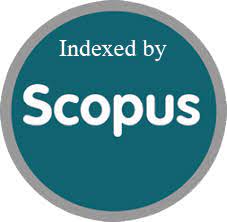Polycystic Ovary Syndrome: Current Insights Into Etiology, Symptoms, And Treatment Options
DOI:
https://doi.org/10.63682/jns.v14i15S.3874Keywords:
anovulation, estrogen, management, hyperandrogenism, ovulatory, dysfunctional, HormonesAbstract
Polycystic Ovary Syndrome (PCOS) is an endocrine disorder that is prevalent in women in the reproductive age whereby the ovaries have cysts and are accompanied by symptoms that reduce quality of life. They include the following; Irregular menstrual cycles, Hyperandrogenism characterized by hirsutism, severe acne and some alopecia, Polycystic ovaries are seen on ultrasound examination. The cause of PCOS is not fully understood, but it is concisely known to be multiethnic and multifactorial with insulin resistance being considered as the critical precipitating factor. This insulin resistance sometimes results in high levels of insulin, adding to hyperandrogenism and worsening of the PCOS manifestation. Measures for managing PCOS are diverse; medical and additional or alternative therapies are employed. Most of the allopathic management involve the use of hormonal treatments like the combined oral contraceptives for irregular menstruation and lowering of androgen levels, spironolactone for hirsutism among others, and metformin for insulin resistance. Likewise nutritional intercession is vital in handling of metabolic perversion linked to PCOS. Healthy carbohydrates, which carbohydrates with a less glycemic index, fibre and daily exercise help with weight and metabolic issues. Further, herbal medicine has other potential benefits in the form of complementary therapies: spearmint tea, for example vitex (chaste tree) to name a couple may help to reduce the discomfort and rebalance hormones. PCOS suffers should be treated individually according to the distinct manifestations because this integrative approach delivers efficient results in managing ailment. Lifestyle changes coupled with pharmacologic and herbal medications enhance the well-being of women with PCOS as well as the reduction of the associated life threatening complications, giving more reason for a better understanding of this illness. Further studies should be conducted to develop new interventions and optimise patient’s care, especially patients with PCOS.
Downloads
Metrics
Downloads
Published
How to Cite
Issue
Section
License

This work is licensed under a Creative Commons Attribution 4.0 International License.
You are free to:
- Share — copy and redistribute the material in any medium or format
- Adapt — remix, transform, and build upon the material for any purpose, even commercially.
Terms:
- Attribution — You must give appropriate credit, provide a link to the license, and indicate if changes were made. You may do so in any reasonable manner, but not in any way that suggests the licensor endorses you or your use.
- No additional restrictions — You may not apply legal terms or technological measures that legally restrict others from doing anything the license permits.










